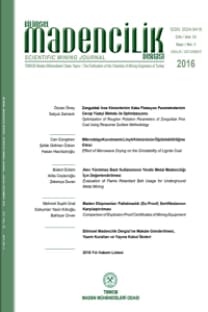İKİNCİ DEMİR VE ÇELİK SANAYİİ
Bu yazıda, memleketimizde demir-çelik sanayiinin kısa bîr tarihçesi yapıldıktan "sonra, bugünkü istihsal imkânları," kapasite ve mamul cinsleri gözden geçirilmiş; ikinci demir-çelik sanayiinin kuruluşuna esas teşkil edecek mamul cinsleri ve miktarları ile Türkiye'nin istihlâk hacmi belirtilmiştir. Koppers Company, Inc. adlı Amerikan firmasının Sanayi Vekâleti için yapmış olduğu etüdlere nazaran, ikinci Demir-Çelik sanayiinin kuruluşta yılda 268.000 ton yassı hadde mamulü istihsal etmesi ve bunun II nci kademede 470.000 tona, III ncü kademede ise 1.000.000 tona tevsii kabil olacak şekilde projelenmesi tespit edilmiştir. Karadeniz Ereğlisi'nde kurulması teklif edilmiş olan İkinci Demir-Çelik sanayii: istihsal metodları, malzeme ve enerjî-su balansları, tesislerin karakteristikleri ve memleket ekonomisine icra edeceği müspet tesirler yönlerinden incelenmiştir. Yazı sahibi, İkinci Demir-Çelik Sanayiinin kurulumu ile ilgili konuda Sanayi Vekâletinin teşkil etmiş oklumu üç ki şilik komisyonun bir üyesi olarak bu etüdlere iştirak etmiştir
After presenting a summary of history of iron and steel industry in Turkey, this article first describes the present production facilities, their capacities and the types of products produced in Turkey. This information compared with the types and annual amounts of iron and steel products consumed i-, used to derive the basic data for establishing a Second Iron and Steel Centre in Turkey. According to the report of Koppers Company, Inc. (Pittsburgh, U. S. A.) submitted to the Ministry of Industries of Turkey on the subject of establishing a second integrated iron and steel plant, the recommended initial annual capacity of the plant wil l be about 268.000 tons flat rolled products and this capacity will easity be increased to 470.000 and 1.000.000 tons after second and third stages of extension respectively. Ereğli on the Black Sea coast is selected as the most suitable site for the new plant. This article includes also a short description of the production methods material flow, energy and water balance, characteristic features of individual production units and the review of the possible effects of the Second Iron and Steel Plant on the economic development of Turkey. The writer of this article has been a member of the three men commitee formed by the Ministry of Industries of Turkey to cooperate with Koppers Company, Inc. in connection with these studies.
- ISSN: 2564-7024
- Yayın Aralığı: Yılda 4 Sayı
- Yayıncı: TMMOB Maden Mühendisleri Odası
Sayıdaki Diğer Makaleler
CEVHERİN KUYU VEYA SİLOLARDAN KONVEYORLERE İNTİKALİNDE GELİŞTİRİLEN YEN İ VE PRATİK BİR USUL (1 )
METAL ve MİNERAL FİATLARI METALLER
ESKİŞEHİR KROM YATAKLARIMIN İŞLETMECİLİK BAKIMINDAN İNCELENMESİ
EREĞLİ'DE KURULACAK DEMİR-ÇELİK FABRİKALARININ DEMİR CEVHERİ İHTİYACININ GİDERİLMESİ
SERAMİK SANAYİİ VE MÜŞTEREK PAZAR
MADENLERDE KULLANILAN LÂĞIM DELİĞİ KUTRUNUN RANDIMAN VE İNFİLÂK MASRAFLARINA TESİRİ
